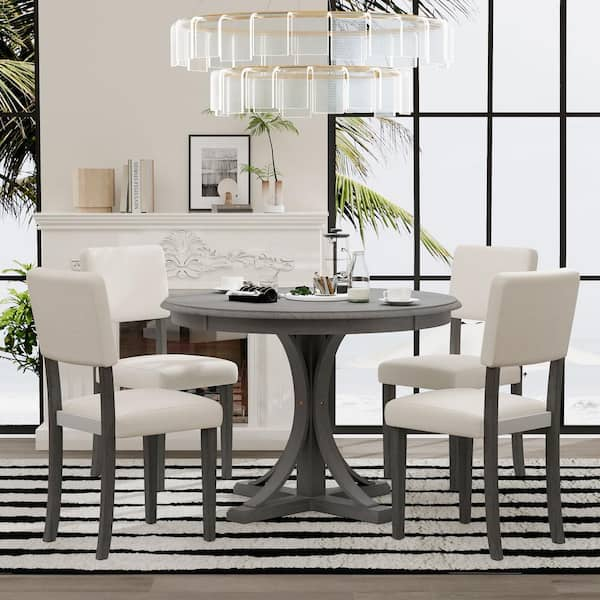From Traditional to Modern: Locate the Suitable Dining-room Table Legs for Your Design
While timeless layouts such as cabriole and turned legs evoke a sense of ageless sophistication, modern designs like barrette and geometric options present a chance for striking visual rate of interest. As you consider these aspects, the question stays: just how can you seamlessly incorporate these varied leg designs to produce a harmonious dining experience?
Understanding Table Leg Styles
The range of dining-room table leg styles can substantially affect both the aesthetics and functionality of the space. Each leg style adds one-of-a-kind useful attributes and aesthetic aspects, dealing with diverse design choices and use demands. Understanding these designs is vital for selecting the right table that aligns with your overall interior decoration vision.
As an example, conical legs provide a tidy, traditional appearance that can enhance an area's sophistication, while stand bases supply security and optimize legroom, making them excellent for smaller rooms. Hairpin legs, a hallmark of mid-century contemporary layout, introduce a commercial flair, permitting an airy, open feel. Similarly, trestle legs stimulate rustic appeal, offering durable assistance and a sense of eternity.
Wood legs can bring heat and appearance, whereas metal alternatives frequently share a smooth, modern vibe. Ultimately, comprehending table leg styles is important for creating a cohesive dining area that mirrors personal style while making certain usefulness and comfort.
Conventional Table Leg Options
When choosing dining area table legs, conventional alternatives commonly personify timeless elegance and craftsmanship. These designs mirror an abundant heritage and a commitment to high quality, making them ideal for those that value timeless looks.
One of the most renowned conventional leg designs is the cabriole leg, identified by its graceful curved shape. This style typically includes ornamental carvings and is most frequently located in Queen Anne and Chippendale furnishings. Another popular alternative is the turned leg, which flaunts a series of smooth, rounded shapes that supply a traditional look while maintaining stability.
Furthermore, the straight leg, while simple, offers a basic and tough framework that can blend effortlessly with a variety of tabletop styles. For those drawn to ornate describing, claw-and-ball feet legs evoke a feeling of grandeur and can function as a spectacular prime focus in any dining room.
Last but not least, pedestal bases, although not strictly legs, provide an alternate typical alternative that enables ample legroom and can be perfectly carved. Each of these typical leg styles contributes to the overall setting of a dining-room, marrying function with visual charm.

Modern Table Leg Styles
Modern table leg layouts supply a varied series of styles that stress tidy lines and innovative products. These designs typically prioritize capability while functioning as striking centerpieces within an eating area. Minimal appearances prevail, with legs crafted from materials such as metal, glass, and crafted wood, which add to a contemporary and airy feel.
One prominent style is the hairpin leg, identified by its slender, conical structure that gives security without frustrating the table top (dining room table legs). This style is usually discovered in mid-century modern furnishings and can easily complement numerous table shapes. One more fad is using geometric shapes, where legs may tackle angular or unbalanced forms, including aesthetic passion and a touch of artistry

Mixing Styles for Distinct Areas
Often, home owners seek to produce special eating rooms that reflect their personal design by mixing different layout elements. This approach permits the consolidation of varied aesthetics, resulting in a harmonious yet unique environment. Coupling a rustic wooden table with smooth, modern metal legs can produce an attractive comparison that elevates a fantastic read the space's total charm.
Furthermore, integrating vintage table legs with modern tabletops can evoke a feeling of background while preserving a modern perceptiveness. Such combinations not only showcase individual preference yet likewise encourage creative thinking, allowing homeowners to curate a space that really feels both individual and inviting.
Shade plays an essential role in this blending process; choosing table legs that complement or contrast with the existing color pattern can enhance visual passion. For instance, whitewashed legs can soften the daring of a dark table surface area, developing a balanced aesthetic.
Tips for Choosing the Right Legs
Selecting the right table legs is crucial for achieving both performance and visual charm in your dining space. Begin by thinking about the general style of your area. Conventional setups benefit from legs that include detailed makings or transformed designs, while modern rooms might ask for streamlined, minimalist designs.
Following, analyze the elevation and stability of the legs. dining room table legs. Standard eating tables vary in between 28 to 30 inches in height, so make sure the legs match this measurement for convenience. Furthermore, durable products, such as hardwood or steel, can enhance stability and durability
Examine the leg shape too-- options include straight, tapered, or pedestal styles. Straight legs supply a traditional appearance, while tapered legs can include a touch of sophistication. Pedestal bases offer sufficient legroom and are excellent for smaller sized areas.
Verdict
In summary, selecting the excellent eating space table legs requires cautious factor to consider this link of both modern and traditional designs. By balancing leg design, height, and product with the general design, a cohesive and welcoming ambience can be accomplished.
The range of eating space table leg designs can considerably influence both the looks and capability of the space. Eventually, understanding table leg designs is necessary more helpful hints for creating a natural dining location that shows individual style while guaranteeing practicality and convenience.One of the most famous conventional leg designs is the cabriole leg, identified by its graceful bent shape. Straight legs offer a traditional appearance, while tapered legs can include a touch of style.In summary, selecting the excellent eating room table legs calls for careful consideration of both traditional and contemporary designs.